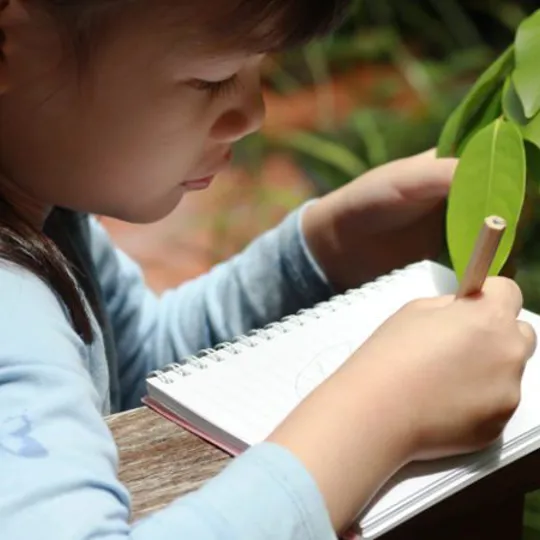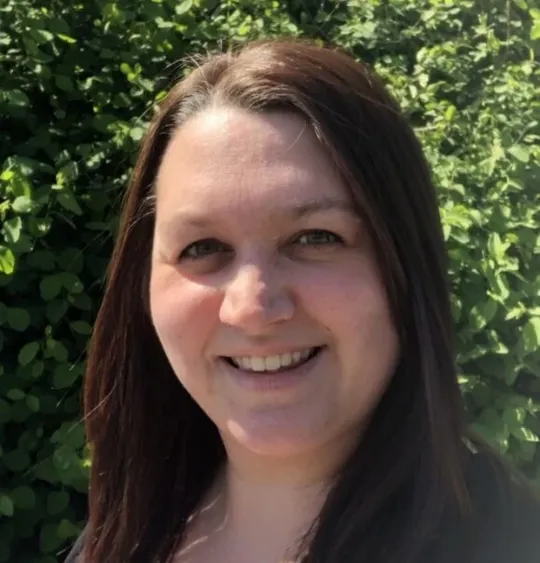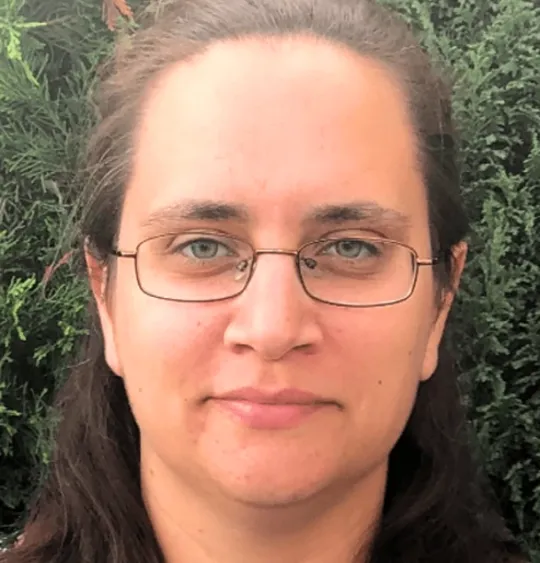Level
Lower Primary (Suitable for children aged 4–7 / Years R–2)
Hours of Study
2 hours per week
Level
Lower Primary (Suitable for children aged 4–7 / Years R–2)
Hours of Study
2 hours per week
Our Lower Primary Science course nurtures your child’s natural curiosity by helping them explore the world through observation, experimentation and discovery. This course introduces the fundamentals of scientific thinking in a fun, engaging way.
Each topic encourages hands-on learning through practical tasks, outdoor exploration and simple investigations.
With your support, your child will learn how to ask questions, make observations, and develop early understanding of life, materials, weather and the environment.
The course follows the UK National Curriculum and Cambridge Primary Science Curriculum, completed over two years — and lays the foundation for confident progress in Upper Primary Science.
Each year of the course is divided into three parts, each spanning 12 weeks of engaging lesson plans, with regular assignments to support your child's understanding and progress.
Requirements: Your child can begin at the stage that best reflects their current level of ability and confidence. No prior Science knowledge required.
Study method: A parent-guided course with structured learning content. Expert Tutor feedback and a dedicated Student Progress Manager are included to help support your child’s progress.

Key topics
Take a look at our Lower Primary Science homeschooling course to see what your child will be studying, with these exclusive previews on our student learning platform. These will give you an insight into our approach to this subject, the different topics it covers and the types of activities and exercises your child will be doing once they get started.
Our easy-to-use online student learning platform gives your child instant access to everything they need for each of their courses. It’s where they’ll find all their study materials and resources, and where they can upload assignments, find out their grades and receive feedback from their course Tutors. You’ll also have parent access while your child is studying with us, so you can follow their progress and achievements.
We understand that every child is different, and our personalised approach to our students’ learning and wellbeing makes sure your child gets the support they need, when they need it. From their own dedicated Student Progress Manager to the option of 1:1 sessions with a specialist Tutor, your child has a friendly team behind them at every stage, so that they can unleash their full potential while studying in a safe and supportive environment.
We’re the only online school where your child can choose what, how, when and where they study – with no live lessons, set timetables, or crowded classrooms – for a 100% personalised, pupil-led learning experience. Our unique approach to homeschooling lets your child study at their own pace, in ways that work for them, wherever you are in the world – ensuring they really can learn without limits.
Meet the tutors
Tutors

Subjects
Teaching Levels
Tutors
I completed my PGCE in 2010 at the University of Leicester, gaining QTS at the same time. My degree is in Equine Sports Science as horses have been a passion of mine since I was nine years old. I also obtained a Postgraduate Diploma in Working with Children and Families: A Psychoanalytic Observational Approach in 2017. When time allows I am looking forwards to completing the Masters year of this course, but not just now, as I am enjoying learning to be a mummy to my nine-month-old son.
My main area of expertise is helping children for whom English is an additional language to learn English, particularly younger children. I have worked in many schools where the majority of children did not have English as a first language, and this taught me the value of using pictures and sign language to help children acquire new words. I honed these skills while teaching at an international school in Thailand. I have worked across the whole of the Primary age range but I have extensive experience within the early years and the foundation stage.
I am also passionate about helping children to become emotionally literate through the use of mindfulness. Mindfulness is a powerful tool in helping children (and adults) to understand, accept and manage their changing emotions.
In my spare time, I enjoy spending time with horses and have recently begun learning how to work with horses without using a bridle so they are free to make more of their own choices. This has been (and still is) a huge learning curve for me, but I am relishing the challenge.
Other pastimes of mine are yoga, walking, playing my flute and reading. A varied life helps to keep me feeling my best! I always think of imaginative ways to help children grasp tricky concepts and am really looking forwards to helping your child fulfil their potential.
Tutors

Subjects
Teaching Levels
Tutors
After completing a degree in English, I went on to complete a Primary PGCE specialising in Early Years and Key Stage 1. Although I initially began my career teaching in EYFS in the Reception class, I have since had the opportunity to teach throughout the whole Primary spectrum from Nursery all the way up to Year 6 and I have also had extensive experience of working with students with a range of special educational needs and disabilities. I think that having a broad teaching experience is really valuable as I am able to fully understand progression in learning and to recognise next steps.
Most recently I have taught as a 1:1 Tutor, working predominantly with pupils who are being home educated. I have found working with individual pupils to be hugely rewarding and I love having the opportunity to help the students to improve their self-confidence, and to develop motivation and enthusiasm. I firmly believe that these are the main attributes which lead to successful independent learning.
When I am not teaching, I love spending time outdoors walking in the countryside or by the coast. I also enjoy swimming, keep fit and I love to travel when I am able to. I am also an avid reader and like nothing more than curling up with a good book – preferably with my cat on my knee!
I believe that being a teacher is a really privileged position and I feel so fortunate to have been able to have the opportunity to share my love of learning with so many pupils over my teaching career. I am absolutely delighted to be a Tutor at Wolsey Hall and I look forward to sharing my enthusiasm for learning with many students and their families and to support them on their learning journeys.
Tutors, Tutor Services and Support

Subjects
Teaching Levels
Tutors, Tutor Services and Support
I have always been interested in how children learn. Indeed, my work experience placement at the age of 15 was spent in a Special School observing the various approaches that were used to ensure individual pupils had the very best provision. This led me to a four-year teacher training degree, graduating in 2001 with a QTS with English qualification.
Since then, I have been teaching mainly across the KS2 age range in Blackpool, Lichfield and Walsall. I played a big part in the development of PE and School Sport in Blackpool between 2002 – 2006, and then led Science, English and Maths in Lichfield, Dr Samuel Johnson’s birthplace. I love connecting with pupils and their education. In every class I have had, there are pupils who love or hate Maths or English or Science.
But there is always a way to spark their interest and to promote enthusiasm for every subject. And I take pride in enabling children to learn in their own way.
When I am not working, I love playing squash and going for a run. My Squash partner beats me regularly, but we somehow manage to have a really good battle on the court each week! I was never a runner growing up and even in my 20s, but I took it upon myself to get a bit fitter as I entered my 30s, and found myself running the London Marathon in 2017! It was the biggest challenge of my life, but the sense of satisfaction was incredible.
I am excited to be working with Wolsey Hall Oxford because of the time I will be able to spend with individual pupils, discussing and guiding their learning. I look forward to welcoming you as your Tutor, and to joining you and your child on your learning journey.
Tutors

Subjects
Teaching Levels
Tutors
I have a proven track record as a teacher in Primary Schools and as a lecturer focusing initially on Key Stage One and Early Years. However, I have taught all Primary age groups and children with Special Educational Needs and I have enjoyed mentoring both children and adults.
I have an affinity with homeschooling because it enables the needs of children and their individuality can be nurtured so effectively. Some of my friends’ children were homeschooled, and they went on to excel in their fields.
I like to help learners to become confident and enjoy their achievements. Having taken myself back to university to complete my Masters (in Education), I understand the pleasure that comes from continuing to learn. I recently attended a course on Phonics in The Early Years and Key Stage One and I’m a firm believer in lifelong learning.
I love to be reflective and am fully versed in study skills and pedagogy in education. I have successfully helped parents and children to develop these skills. I have spoken at educational conferences on work-based learning and education and have published a paper on online learning. I am flexible, adaptable, creative and enjoy working with others.
My hobbies are walking in the countryside and researching aspects of current affairs and science more deeply. I can draw and paint, and I like to dance.
I am delighted to be working with Wolsey Hall and to sharing my passion for education with you.
Tutors

Subjects
Teaching Levels
Tutors
After achieving a degree in BA Combined Arts (Psychology and Sociology) at the University of Leicester in 2006, I completed my PGCE at the University of Northampton and accomplished a life long ambition, gaining QTS in 2007. Teaching has been a dream of mine ever since I used to line up my toys and take the register! Having always wanted to be a Primary school teacher, my passion and enthusiasm for the role has continued and is something I’m excited to bring to Wolsey Hall.
Throughout my career, I have taught from Years 2 – 6, which has given me a great feeling for the whole Primary learning journey. I have a particular interest in Maths and Science. Experiencing those ‘light bulb’ moments of clarity in Maths, as well as the awe and wonder of scientific discovery were the memories that I cherish the most about my own learning. Seeing similar reactions in the children I teach brings me such joy!
I have taught in two Primary schools in Buckinghamshire, been a Subject Leader for Science, and have run After School Science clubs in order to extend children’s knowledge and curiosity for the subject. Teaching Maths is a strength and I’ve always enjoyed helping children learn and apply different problem-solving techniques.
Writing stories and humorous poems has always been a passion, along with a great love of baking, cooking, and making things for family and friends. The rest of my out-of-school time is dedicated to entertaining and being with my two children.
Tutors

Subjects
Teaching Levels
Tutors
Since qualifying for Primary teaching in 1990 I have spent over 30 years working across the whole Primary age range with children from 4-11 years of age – and I love it! There is nothing like the buzz and satisfaction of someone loving learning and finding that they can achieve things they never thought possible, whilst all the time having fun and finding their inner confidence.
I teach the whole curriculum but my particular passion is teaching literacy skills. To establish a love of reading and writing is one of the best gifts you can give, enabling a lifetime of self-expression and the skills needed to do anything a person desires. It is this belief that led me to lead English in school for almost 20 years, spending eight years as Assistant Headteacher whilst developing a program of ‘catch up’ for those disillusioned children who have a belief that they cannot read and write.
It was the most satisfying time of my career to see children blossom into avid learners. They became successful students using the nurturing strategies of gardening, cooking and lots of talking to develop those all-important skills in English, and realised that they can achieve and learn now that they have some self-confidence.
I also enjoyed researching the best strategies for supporting students who are new to English and sharing the results of that research in a town-wide project which led to many of us learning new skills.
When I am not teaching, I enjoy the great outdoors, walking and gardening. I love any number of crafts and can usually be found sewing, silversmithing, trying new workshops – either that or engrossed in a book which I seem to get through far too quickly!
Tutors, Learning Support

Subjects
Teaching Levels
Tutors, Learning Support
I began my career as a nursery nurse, working with children from birth to five in Foundation Stage settings, including as a pre-school manager. I thrived in creating a stimulating learning environment for children in which they could become active and curious learners. My experience as a nursery nurse highlighted the importance of laying strong foundations in the early years.
Whilst working as a nursery nurse, I studied with the Open University to complete my BA in English Literature and then completed the Graduate Teacher Training Programme with the Shire Foundation in Luton, gaining QTS in 2011.
As a trained teacher, I have taught in a range of Primary schools gaining a wealth of experience teaching in Early Years, Key Stage 1 and 2. I have found teaching such a rewarding career, and I am delighted to be a Tutor at Wolsey Hall. I’m passionate about teaching children to develop a love of learning and help inspire them to become lifelong learners.
I encourage all children to be resilient, independent learners and teach them how they can reflect on their learning in order to improve further.
I enjoy teaching all subjects, in particular, reading and writing. I love how reading can spark children’s imaginations and transport them to different worlds. Enriching children with the power of language and exploring the meanings of new vocabulary, enables their creative ideas to flow.
In my spare time, I enjoy reading a range of novels, experimenting with baking unusual recipes and participating in my Latin dance classes. Most of my time is spent being Mum to my three very energetic children and participating in their fun, imaginative and very messy adventures!
Tutors

Subjects
Teaching Levels
Tutors
I have been a Primary School teacher for fourteen years. I enjoy inspiring children to learn through active learning and believe enjoyment should be the centre of everything. If a child is happy and enthused in what they are doing, they will want to learn. I am particularly fond of a memory when my class found a hidden den with a mystery inhabitant in the wildlife garden. This led to a creative curriculum that the children found motivating.
In my teacher training, I chose numeracy as my specialism, as I find it fulfilling to help pupils with their misconceptions and build links between concepts. For the last two years, I have held a Maths club, where the children enjoy mathematical challenges through games and puzzles; this enables them to develop their learning whilst having fun.
I have also enjoyed teaching literacy, especially early writing and phonics. I love using children’s storybooks to build learning, looking at the language used and sentence structures to create children’s own versions of the text. My teaching has been inspired by educators such as Pie Corbett, who is a master of storytelling.
I’m always keen to encourage children to be resilient and independent in their learning, thereby enabling them to reflect and improve.
When I am not teaching, I enjoy being outside, either running, cycling with my husband on our tandem or enjoying the garden. I am also a keen music lover and go to over thirty concerts every year.
I am looking forward to working with Wolsey Hall Oxford as I particularly enjoy working with pupils individually, preparing them for their future and ensuring that they reach their full potential.
Tutors

Subjects
Teaching Levels
Tutors
I have always believed that knowledge and learning are amazing gifts. I have also always enjoyed being creative. Becoming a teacher has given me the opportunity engage with all of these, and I thoroughly enjoy what I do. Since qualifying with QTS in 2006, I have taught in schools in Birmingham and Solihull from Early Years Foundation Stage to Key Stage 2. I enjoy working with younger children, as I believe that those early stages of education are vitally important. Children should be guided to learn in their own way, to express themselves fully, and to develop as individuals.
During my teaching career I have taken on different responsibilities including nursery manager, special educational needs support teacher and art leader. I currently divide my time between teaching in a Primary School and working as a Tutor with Wolsey Hall Oxford.
When not working, I have many interests. I have two energetic dogs with whom I enjoy discovering new walks. I am a keen gardener and grow many different vegetables each year, covering my entire garden and most windowsills in my house! I also love to cook and make meals with my own produce. I am a keen painter and I make and paint peg dolls and sew puppets, which I have used in my teaching throughout my career to help young children connect with their learning. I have also always loved languages. I am qualified to Level 2 in British Sign Language and I am currently learning German.
I enjoy helping children to find the path to achieving their goals and the challenge of engaging children with learning. The most rewarding part of being and educator is to see the joy on a child’s face when they understand a concept or achieve their next step. I look forward to helping your child in this way.
Tutors

Subjects
Teaching Levels
Tutors
With my BSc in Geography and before gaining my QTS in Primary Education on a Graduate Teacher programme in 2003, I worked with children with physical and learning difficulties. This was in a residential and day school in Kent, and I found it very rewarding. I had known from an early age that I wanted a career in Primary Education.
I have been teaching for 17 years in a mix of EYFS and Years 1 – 6 classes. The two things that remain constant in my career are my love of teaching and the importance of health, nutrition and fitness. Buddha said, “To keep the body in good health is a duty otherwise we shall not be able to keep the mind strong and clear.” This perfectly sums up what I believe most about teaching and the importance of keeping children fit and healthy so as to become great learners.
I’m excited by the new challenges I face. I love teaching in school, online and one to one. I thrive on figuring out a child’s strengths and weaknesses, modifying my teaching style to suit them, and then seeing them inspired. I look forward to doing so with your child! As your child’s Tutor I’m here to support you and answer any questions you may have.
Following a move to Penzance in West Cornwall, I am in a county surrounded by beautiful beaches and views of St. Michaels Mount. I enjoy spending time as a mum with my three-year-old boy who loves being outdoors, and spending time walking with my friends along the coastline.
I enjoy playing tennis, cycling, baking gluten free bread and cakes and gardening.
Tutors

Subjects
Teaching Levels
Tutors
Having grown up within a family of educators I realised early on that I shared their passion and wanted to follow in their footsteps. I completed my Bachelor of Education in Ireland and since then have taught all ages across the Primary curriculum both at home in Ireland and further afield in the United Arab Emirates. I am now very excited to expand my horizons to Wolsey Hall Oxford and facilitate the learning of students around the globe.
I love the challenge of using children’s strengths and interests to improve their education outcomes and develop their skills in areas that are more challenging for them. This involves getting to know a child as an individual which is always a pleasure because it allows me to then share in their success on a deeper level. This success and progress is what I cherish about teaching and what motivates me to keep going.
I am a proactive, approachable and diligent teacher and am confident in offering a child-centred, active approach to education. It is a privilege to play a part in enabling children to reach their potential. Having taught online for the last number of months I have been inspired to continue with this learning platform. I have found that many children thrive in this environment and I am enjoying the learning curve it has created for me through this journey. It opens many doors for students whilst encouraging responsibility, organisation, and discipline. These are life-long skills which will contribute to creating life-long learners.
Outside of school I can be found swimming, reading or baking. I also like to play tennis and hike with my friends or family. I dream of travelling freely so this can also take up some time!
Choose the perfect combination of courses for your child with our flexible approach to homeschooling. The more courses you select, the more you save per course.

From £570 per course

From £522.50 per course

From £475 per course
Trustpilot Reviews
Rated 4.7 / 5 based on 277 reviews.
